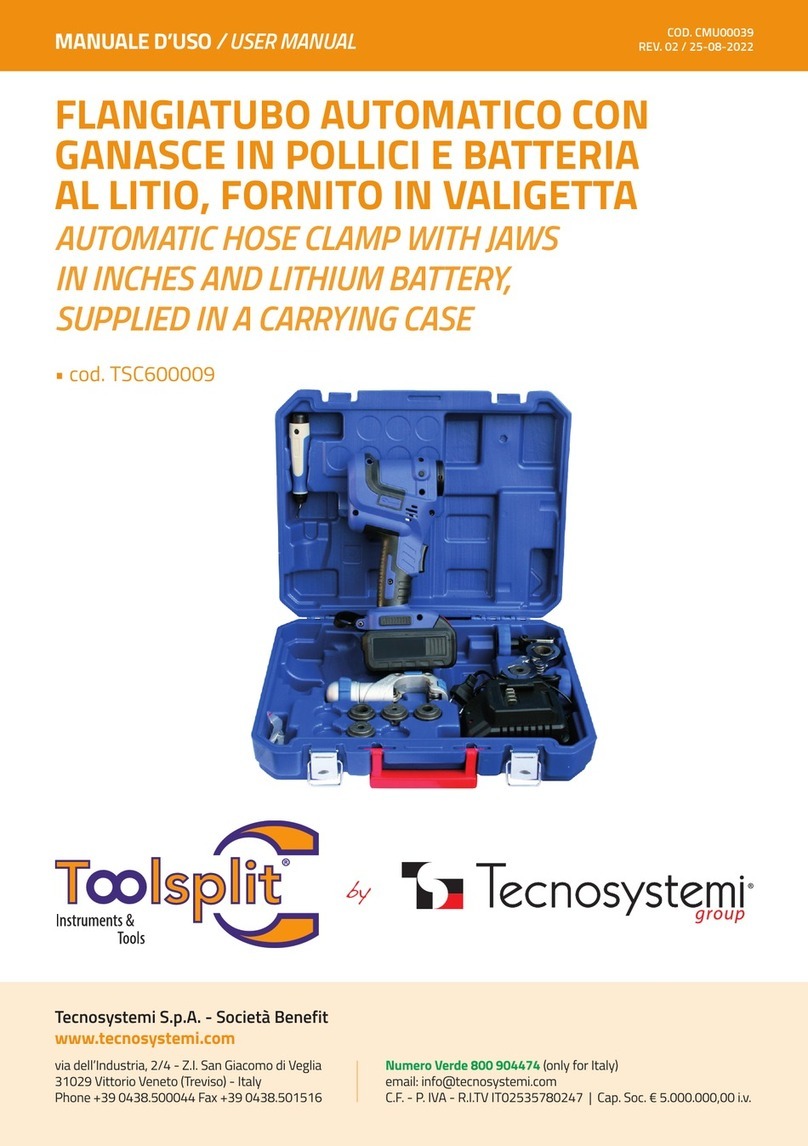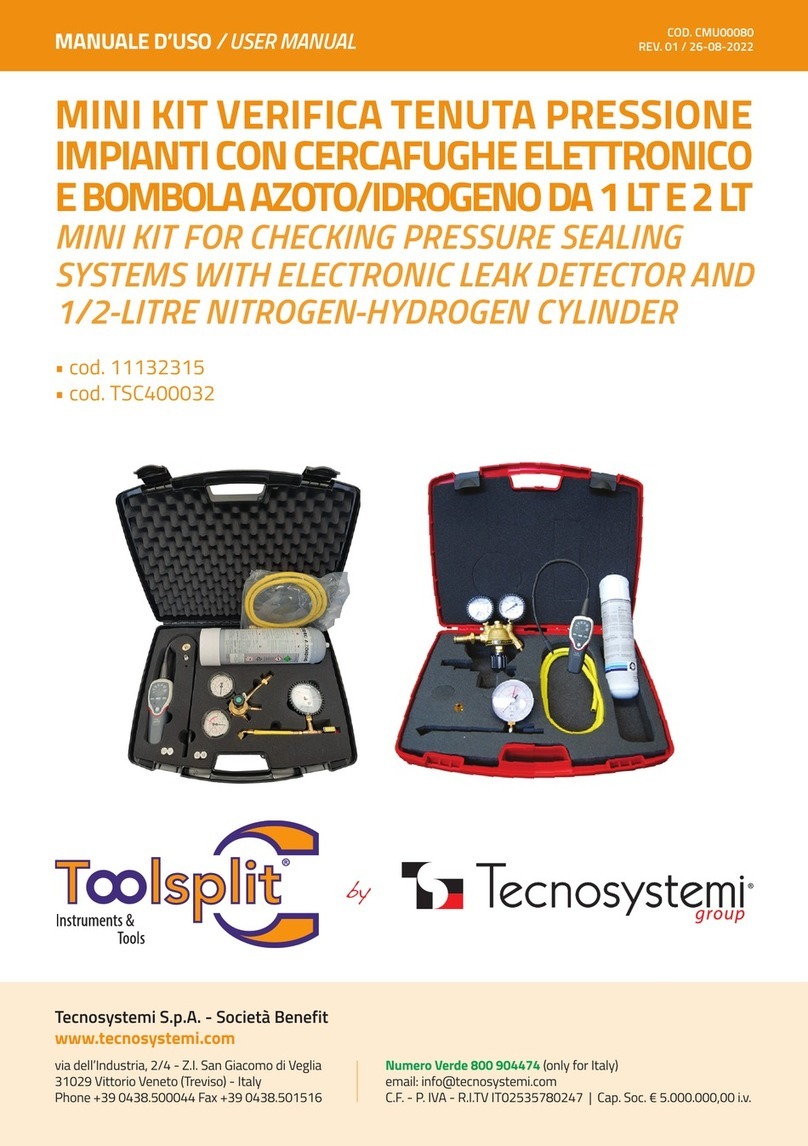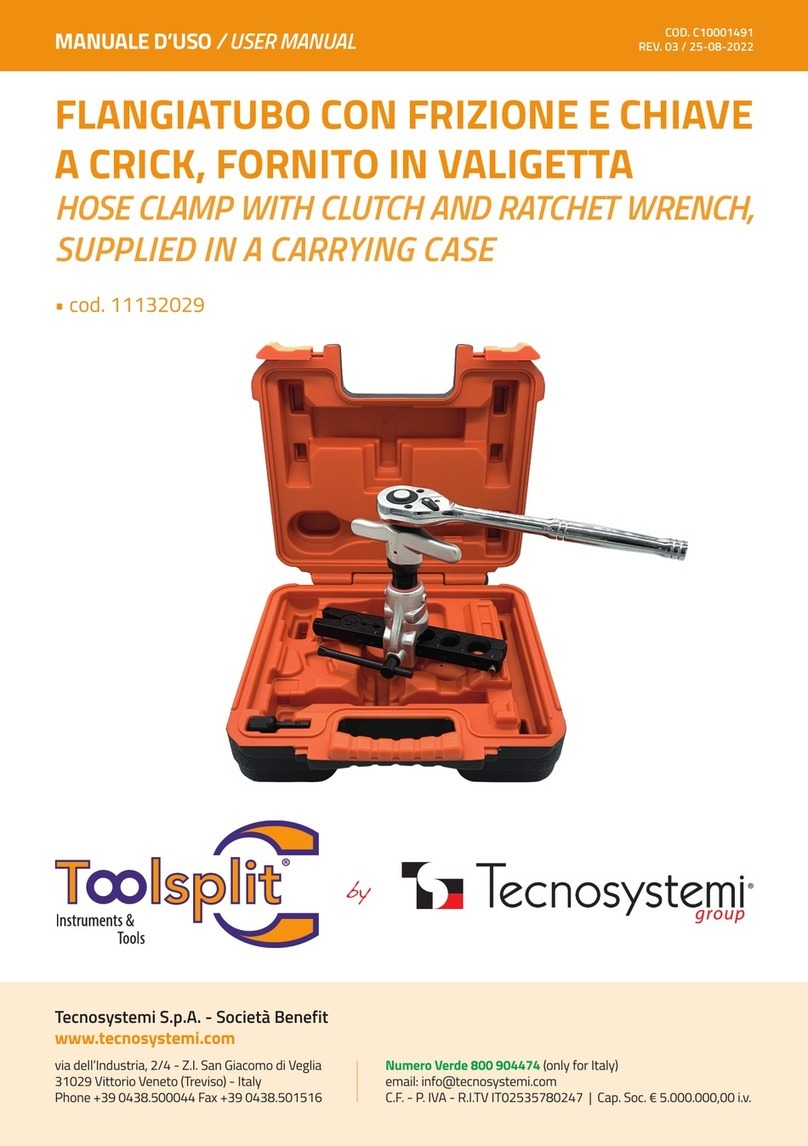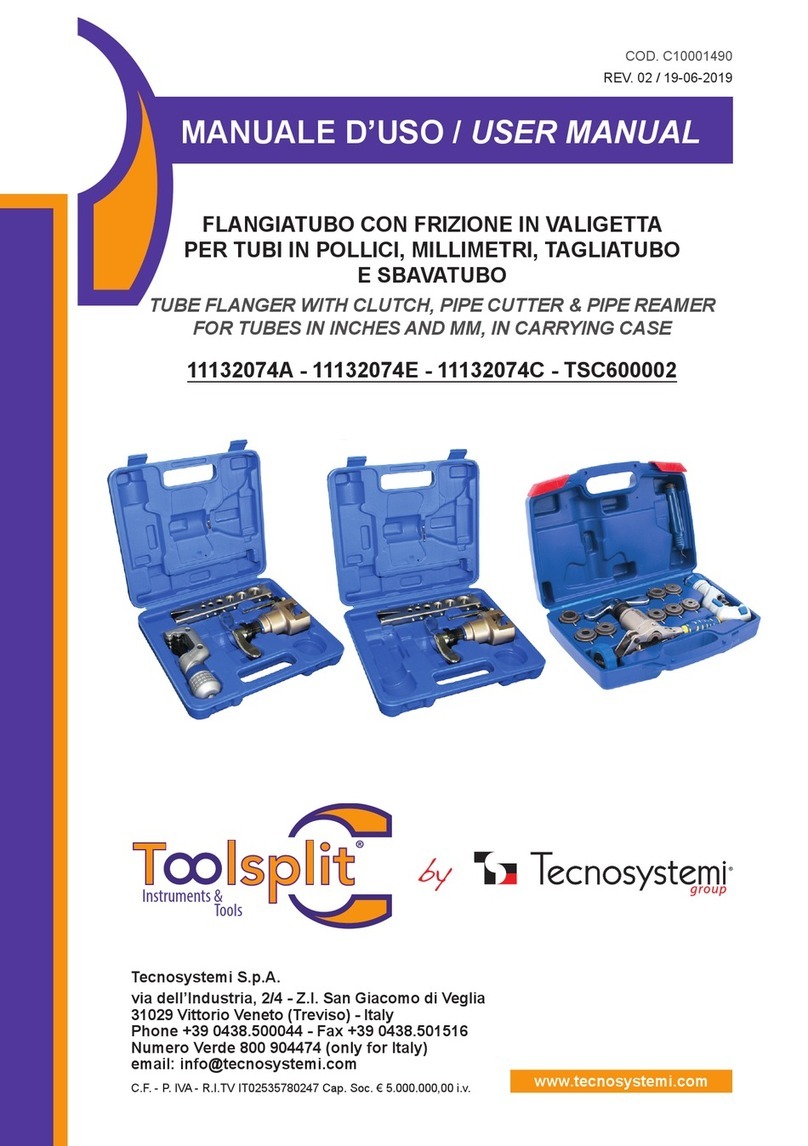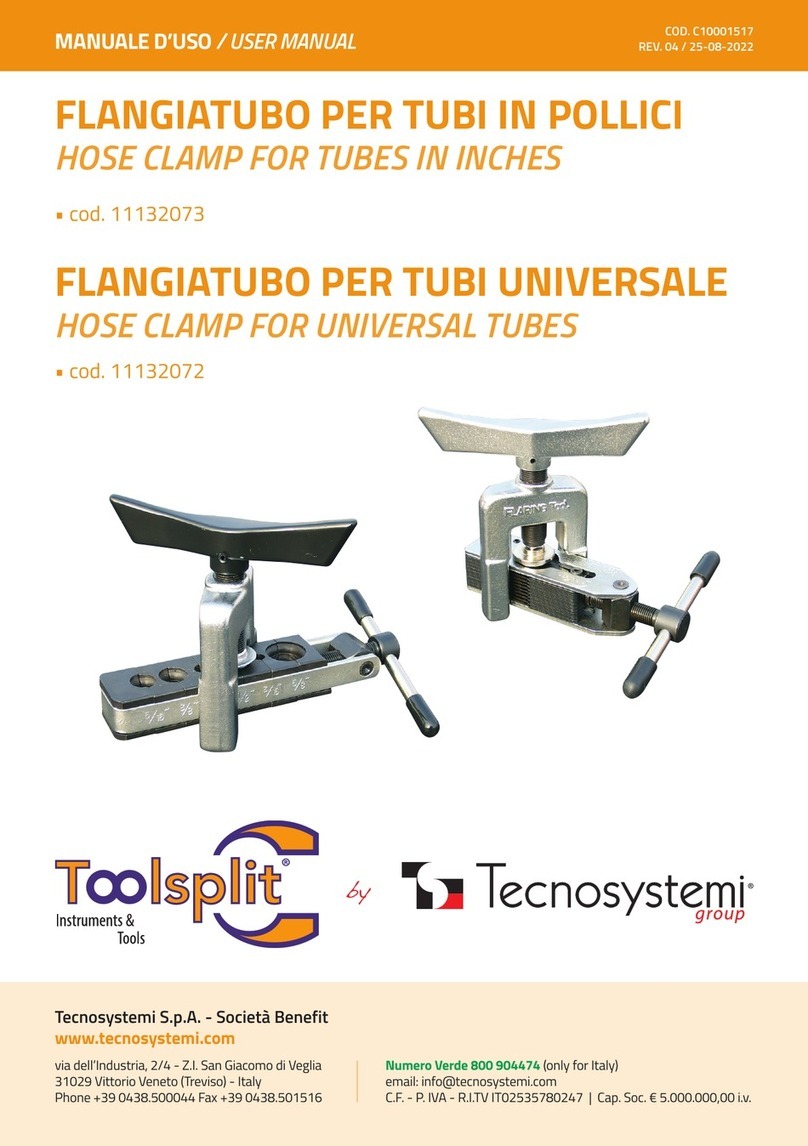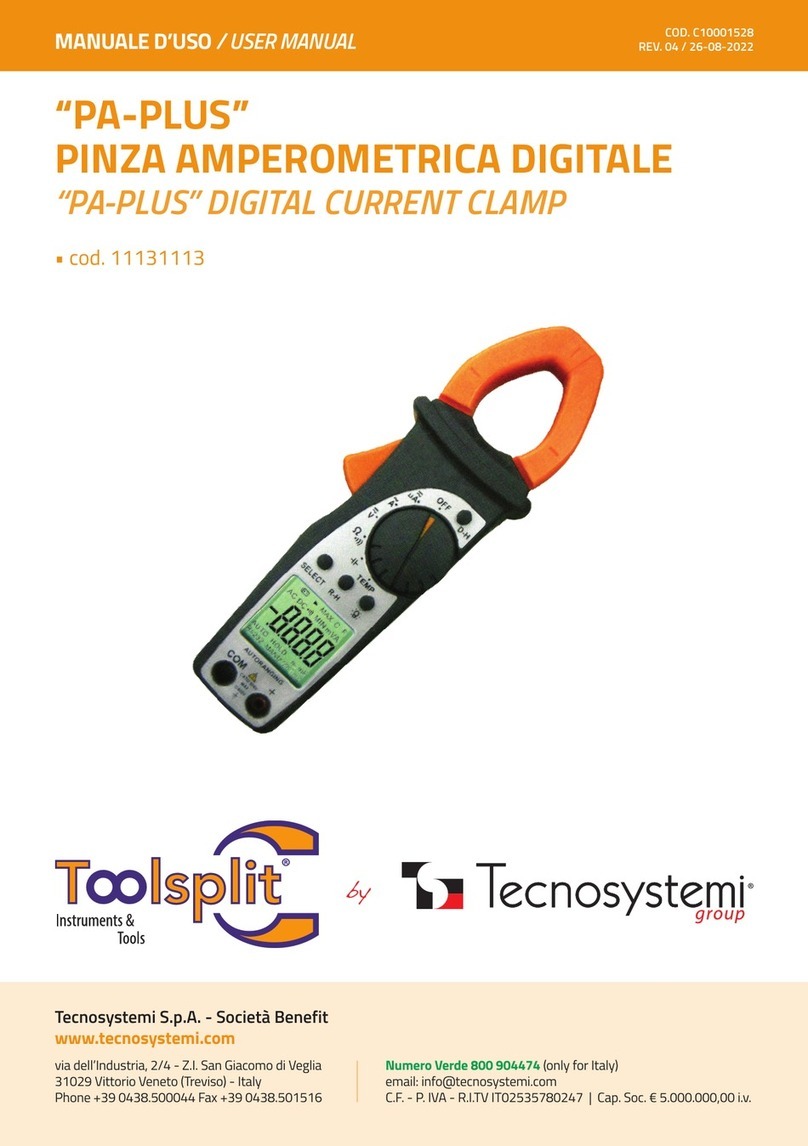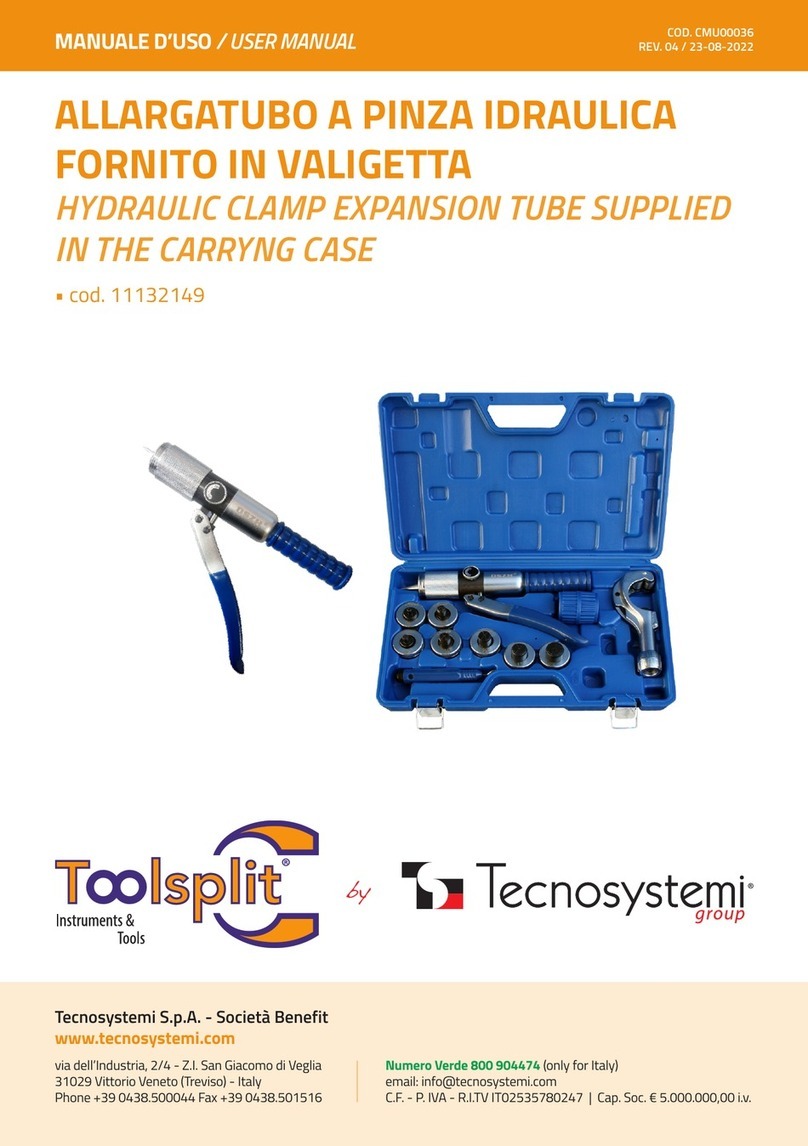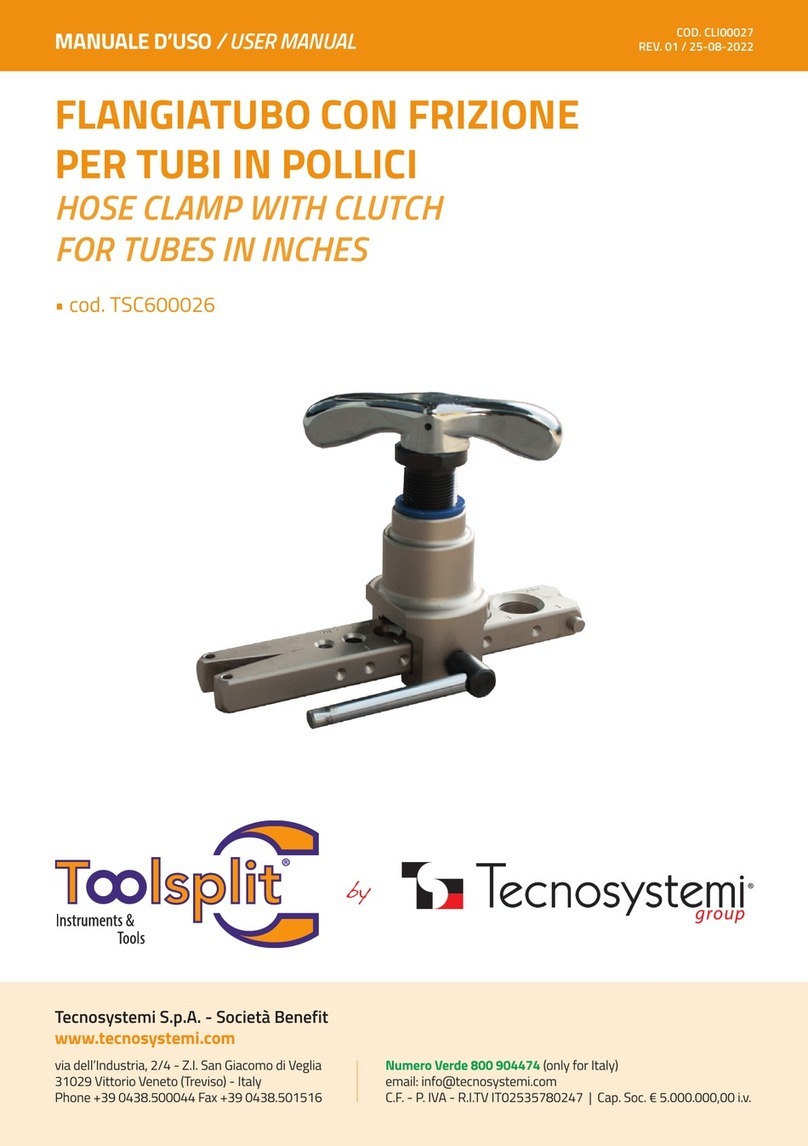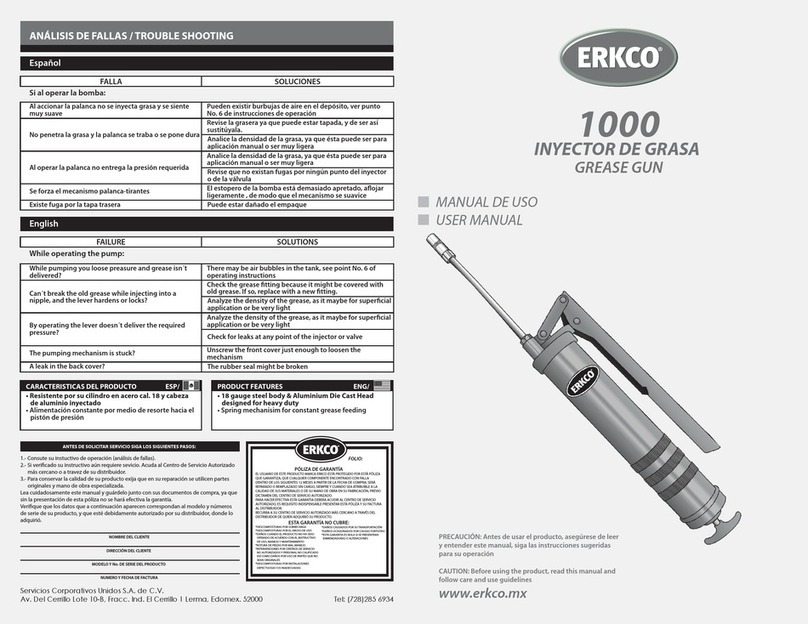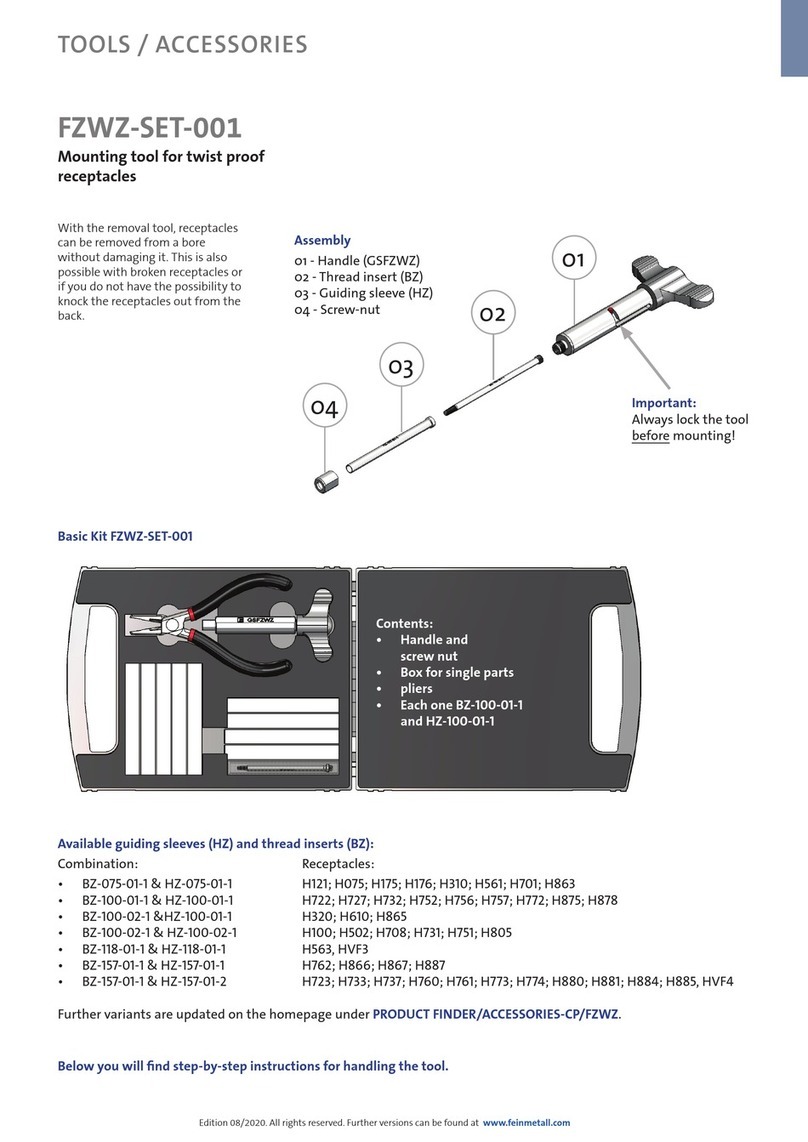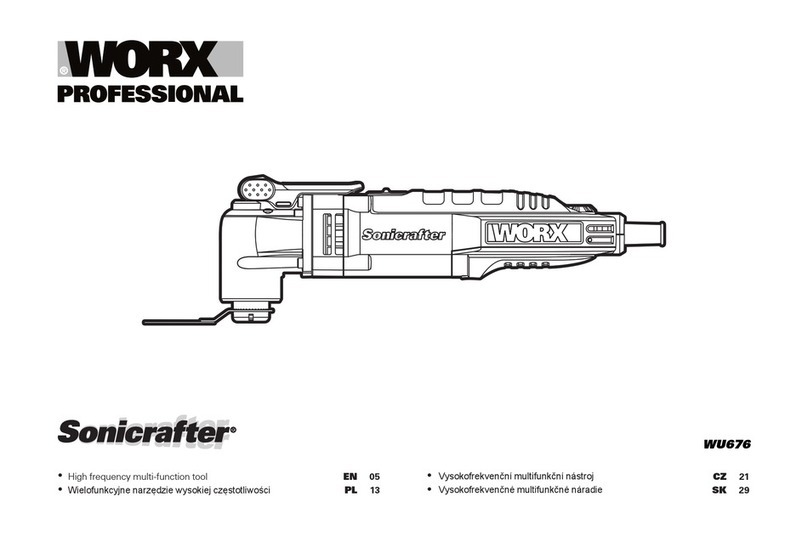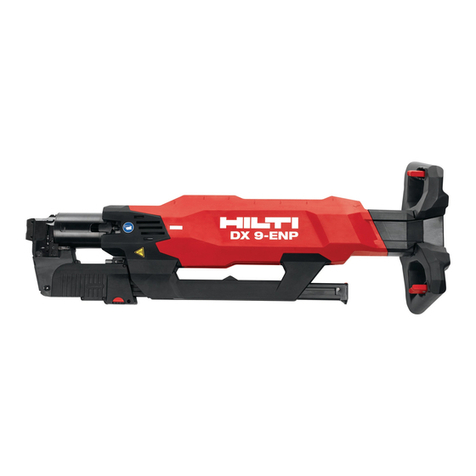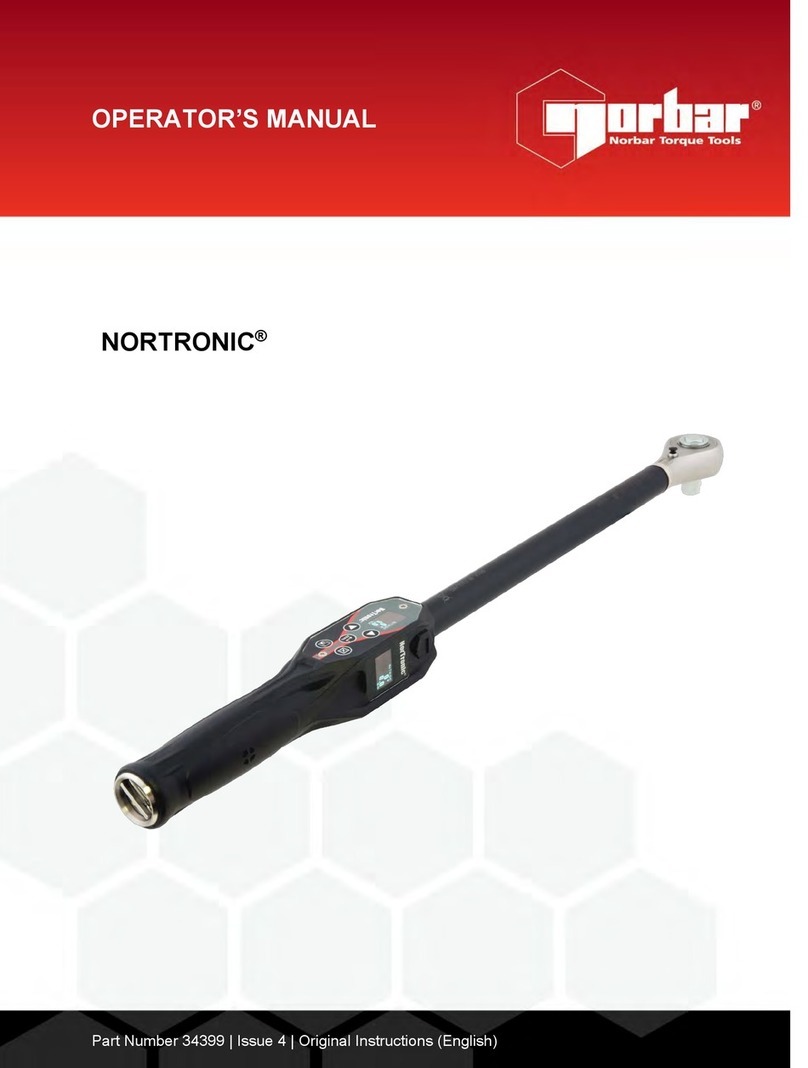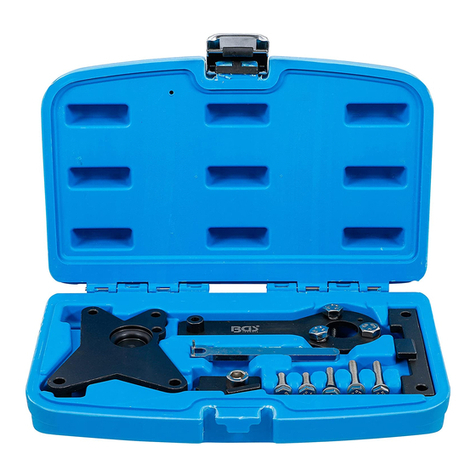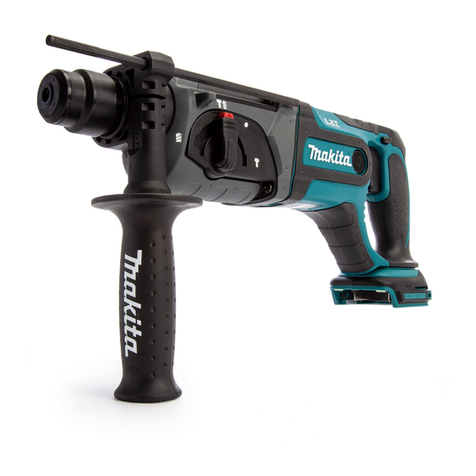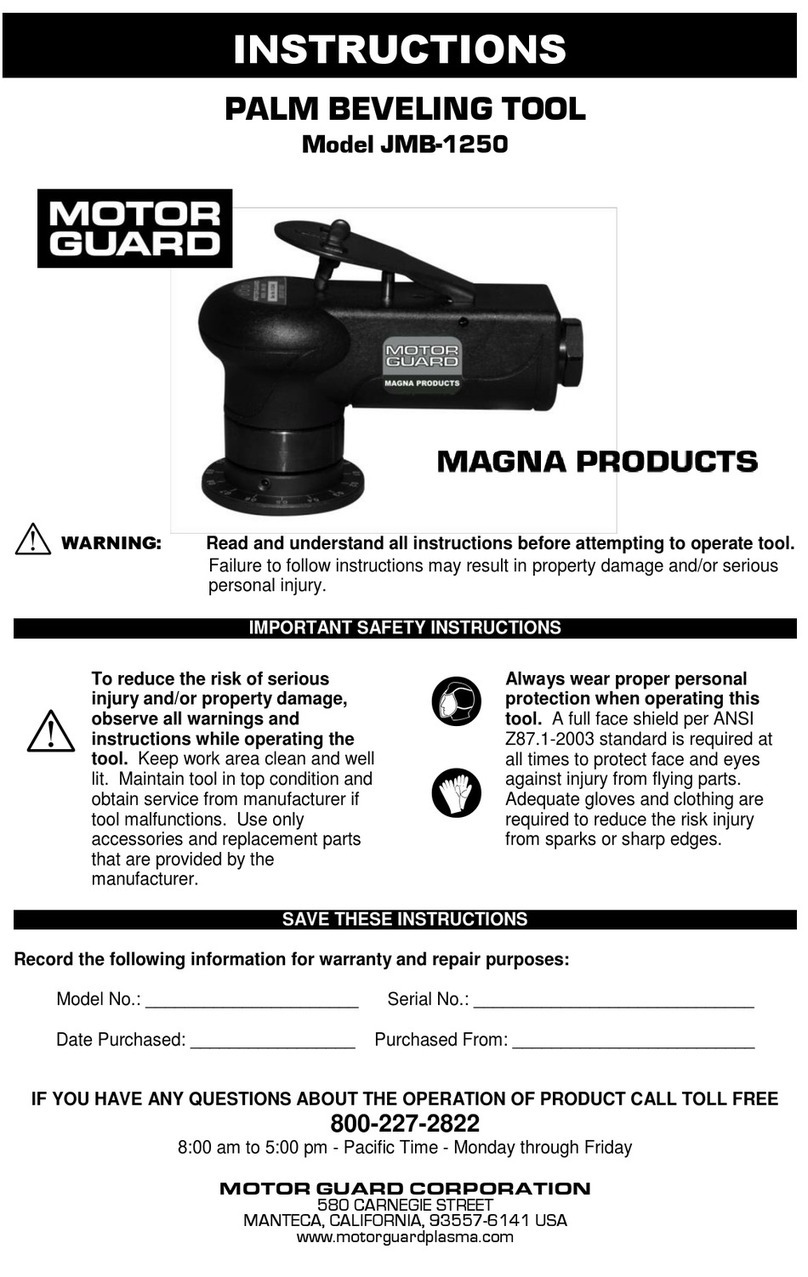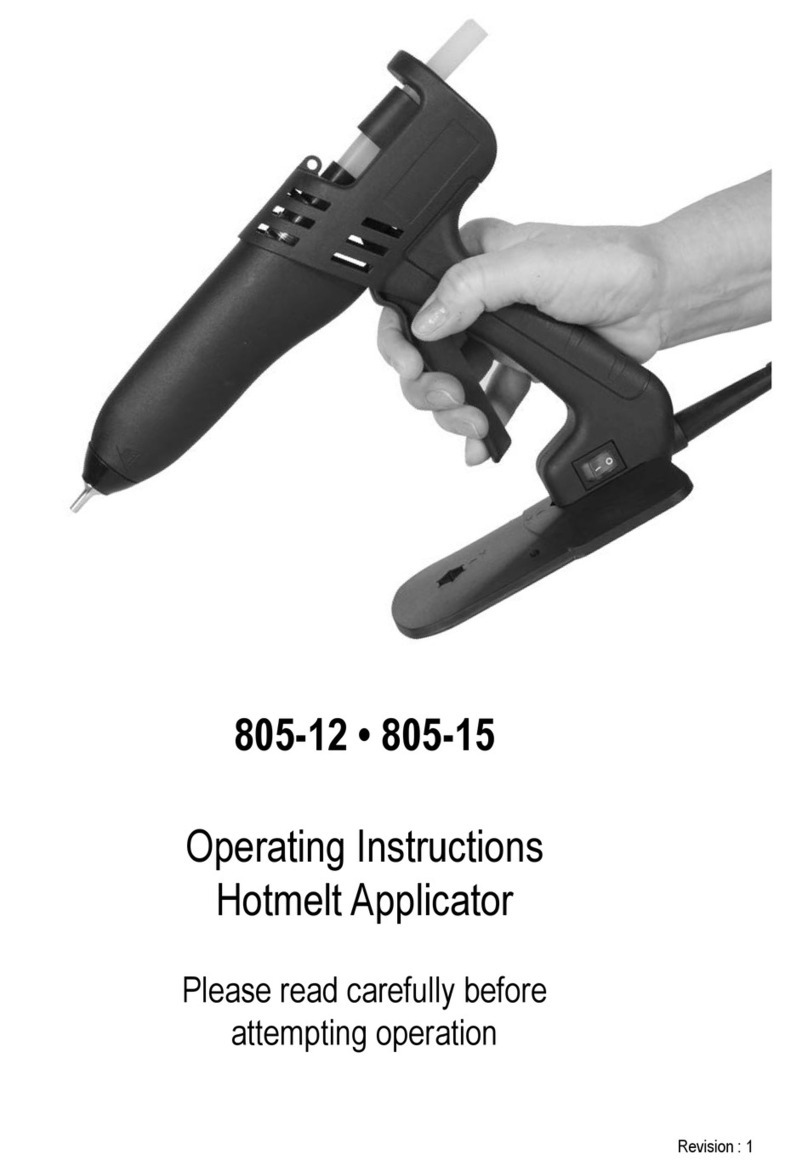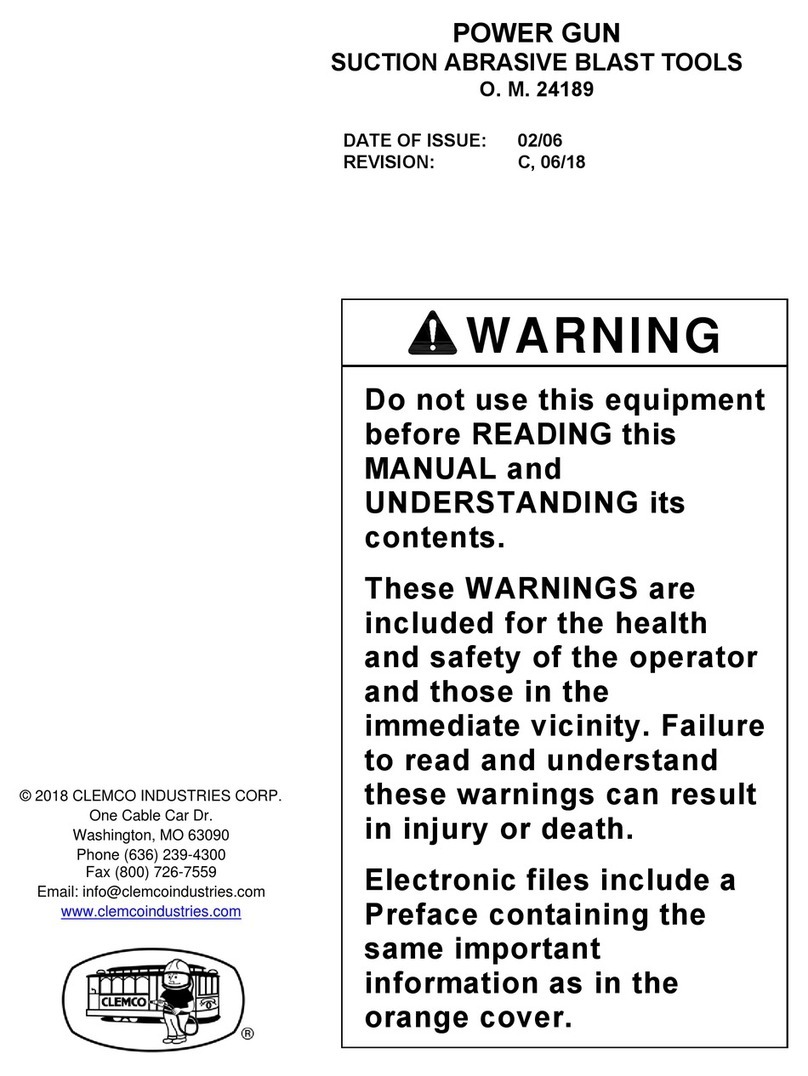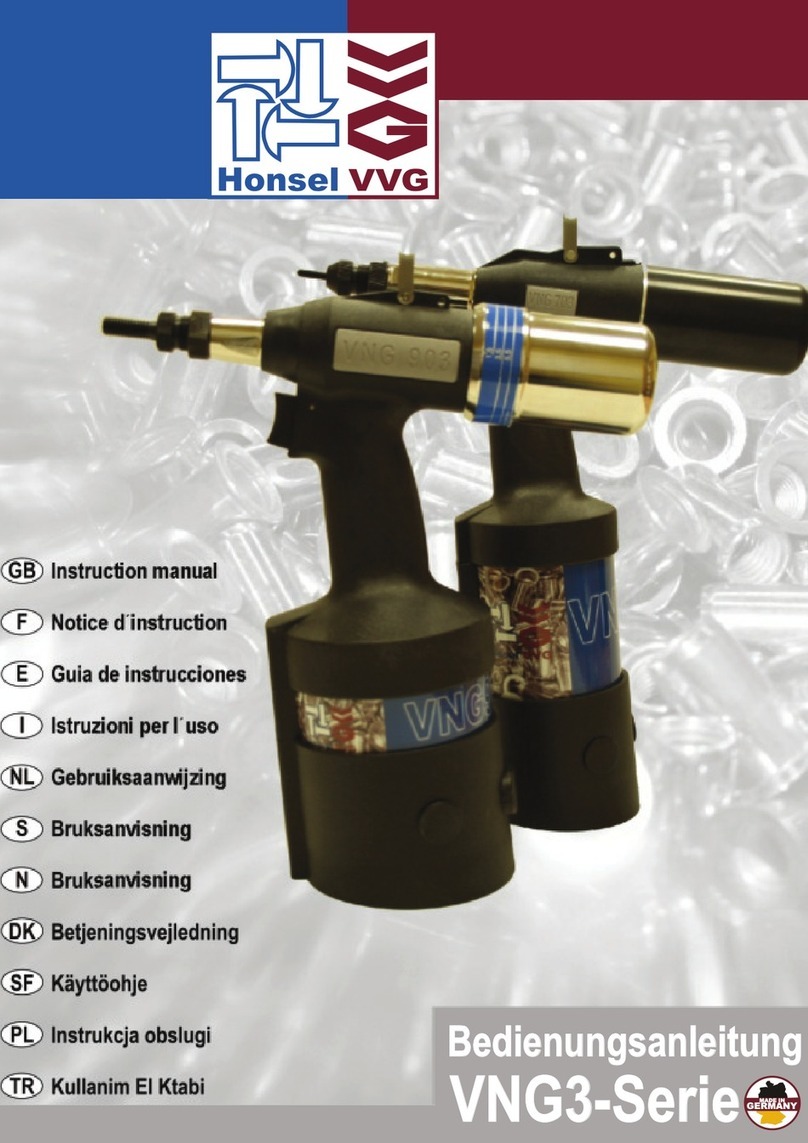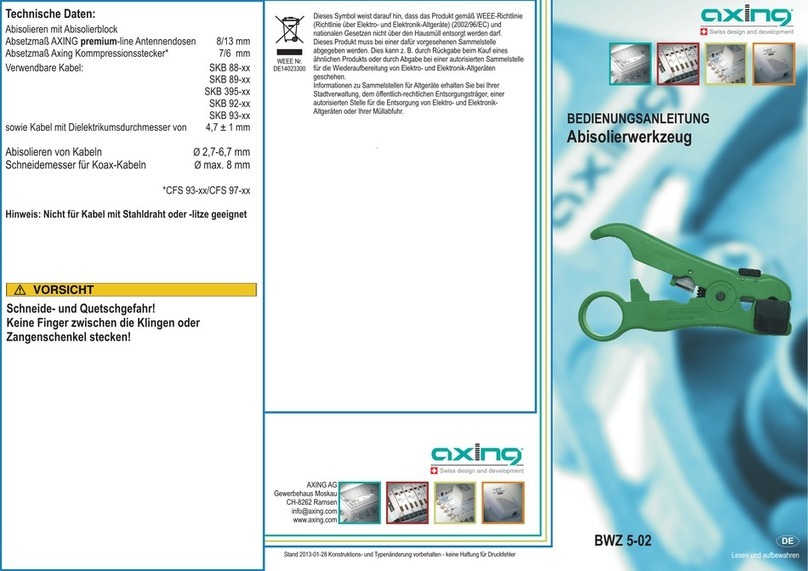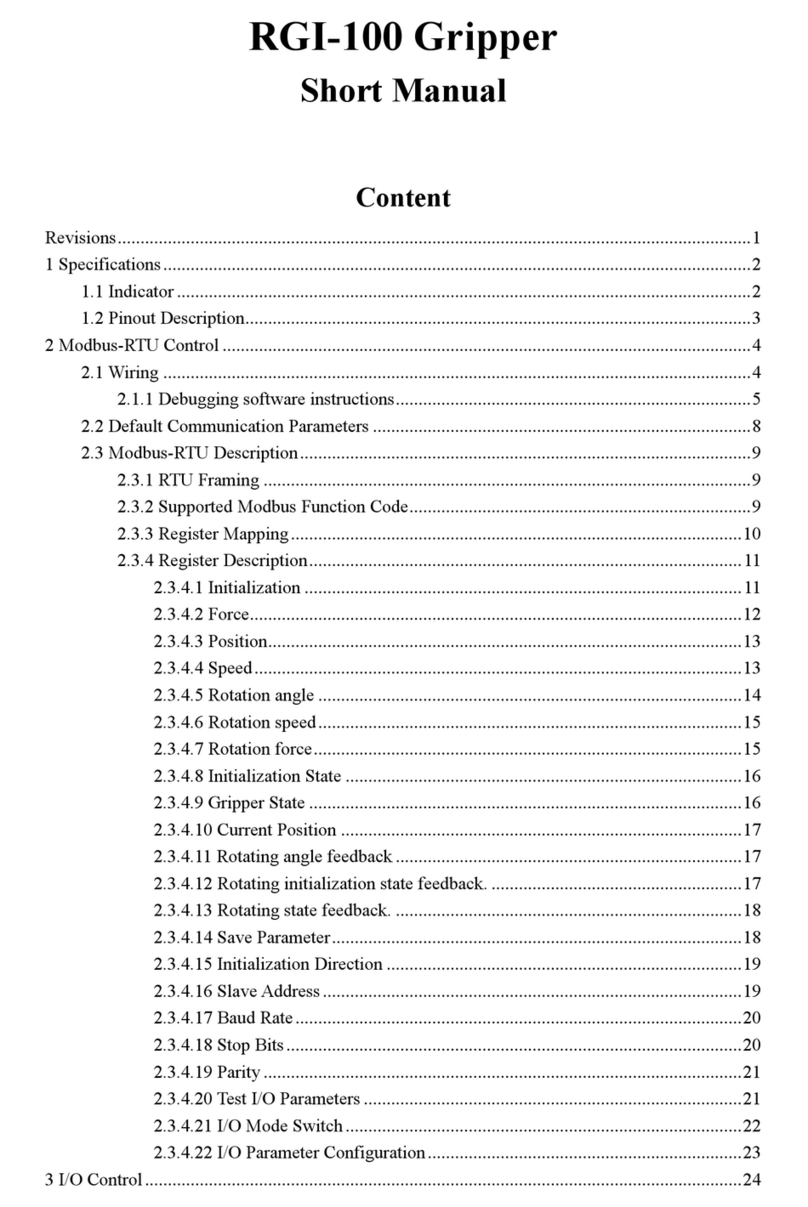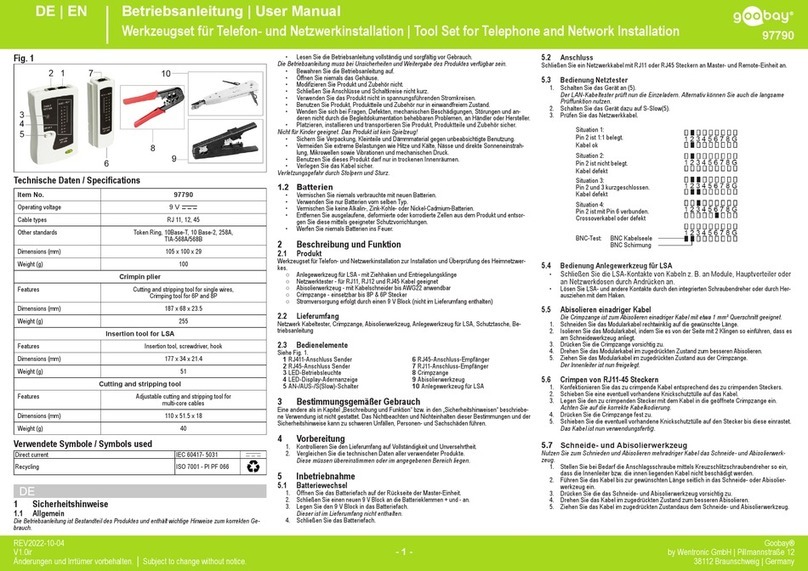
5
10) Do not force the machine
Use the machine only for the intended uses. Use it in respect of the power of the master tool to ensure safe and
efficient operation. Forcing the machine could not only damage it, but also cause accidents.
Do not use the machine in any way that may block the motor or generate smoke or fire.
11) Wear appropriate clothing
Do not wear ties, loose clothing with unbuttoned sleeves, accessories such as necklaces that might get caught in
moving parts of the tool.
If you work outdoors, we recommend wearing rubber gloves and shoes with a good grip; slippery shoes and gloves
can cause injuries.
Tie up long hair with a cap. Wear safety shoes etc. according to the work environment.
12) Work adopting a natural posture.
Stand with your flat feet on the ground and maintain safe balance to avoid tripping/falling and getting hurt.
13) Remove tools, such as wrenches and such like.
Before turning the power switch ON, ensure that the tools used for checking and adjustment have been removed. If
you use the tube flanger leaving tools inside it, damage may be caused to persons or property.
14) Use the tube flanger with great care.
Working with utmost respect of methods of operation and environmental conditions. Carelessness can cause damage
to persons or property. Do not use the device if concentration is low such as if you are tired, after drinking alcohol, if
you feel unwell, or under the influence of medicines etc.
15) Be careful how you use the power cable.
Do not carry the device by its cable or pull the plug from the wall outlet by pulling on the cable.
Do not leave the product near heat sources, oils and fats, sharp objects or ones with sharp edges.
Do not step on the power cable, pull it or exert excessive force that might damage it. You might get an electric shock
or cause a short circuit which, in turn, may cause a fire.
16) Make a careful maintenance every day.
To change parts/accessories, always adhere to the instruction manual. Periodically inspect the power cable. If
damage is found, contact your agent or dealer for an appropriate repair. If using an extension cord outdoors, make
sure it is suitable for outdoor use to prevent electrical shock, short-circuiting or fires. Keep clamping parts dry, clean
and free of oil and grease. If they slip, injury can result.
17) Check that there are no damaged parts.
Before operating the tube flanger, check carefully that there is no damage on the protective coating or to other parts,
and check both normal operation and the specific functions.
Check for any anomalies such as in the adjustment of moving parts and the clamping of components, which may
affect work. Do not use the machine if the start and stop switches are not working properly. Follow the instruction
manual to replace or repair broken protective coatings
or other parts. If the instruction manual does not give any specific guidance, contact your agent or dealer for action
to repair.
18) When the tube flanger is not being used, store it carefully.
Place the tube flanger in a dry place, locked away from children.
19) For the overhaul and repair of the tool, contact Tecnosystemi.
Our products comply with safety standards for the specific category; do not make changes.
For refers, contact your agent or reference dealer. If the repairs are carried out by non-specialized or nonauthorized
personnel, the tool’s performance will be affected, with the hazard of damage to persons or property.
